11. Seeing red

How did squished bugs end up on the lips of the Girl with a Pearl Earring? How is it that deadly mercury was identified in her skin? The answers will bring us closer to finding out about the geographic origin of Vermeer’s red pigments.
Vermilion
Vermilion – an opaque orange-red pigment made of mercuric sulphide (HgS) – was detected in the Girl’s lips and skin. Thousands of years ago, this pigment was mined from the mineral known as cinnabar. In the 4th century, the Chinese discovered a method for making synthetic vermilion.
In the 17th century, the Netherlands (especially Amsterdam and Antwerp) became the centre of large scale production of this dry-process vermilion. (The Dutch were great at making poisonous pigments: tomorrow I will describe the ‘Dutch stack process’ method for making lead white, and her skin will be described in more detail later.)
The distribution of vermilion in the Girl’s face and lips can be seen in the mercury (Hg) map from MA-XRF.
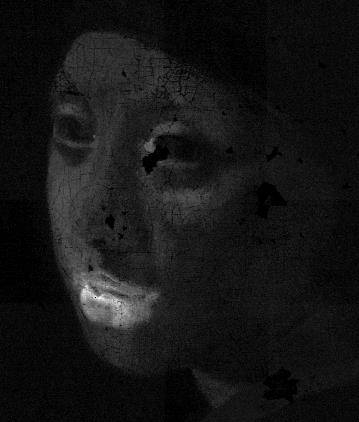
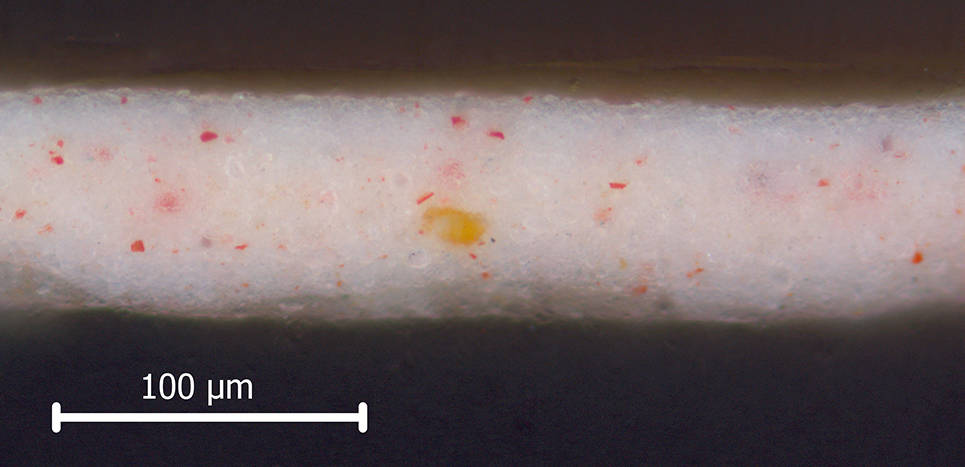
A cross-section from her skin was examined with SEM-EDX, and mercury (Hg) was detected in the small red particles. Lead white and red lake was also present in this sample.
Cochineal
Cochineal is present in the Girl’s skin. It was probably made from the species of insects called Dactylopius coccus Costa. They live on prickly pear cacti in Mexico, and the Andes region of South America. As far back as the 15th century, the female insects were brushed off the cactus, dried, and crushed to extract carminic acid. This produced a carmine dye with a beautiful scarlet colour, which was highly prized for dyeing fabrics.
After the Spanish conquest of the Aztec Empire (1519-21), which opened trade routes to the New World, cochineal was exported to Spain. From there, it was regularly sent to Antwerp. In the 17th century, cochineal was so valuable that its price was often quoted on the Amsterdam commodity exchange.
The colour could be extracted from pieces of cloth that had already been dyed. To turn cochineal into a paint, the red dye has to be changed from a liquid into a solid by attaching it to a white powder, usually hydrated alumina. The resulting pigment is called red lake, which Vermeer mixed with oil and other pigments to make a paint.
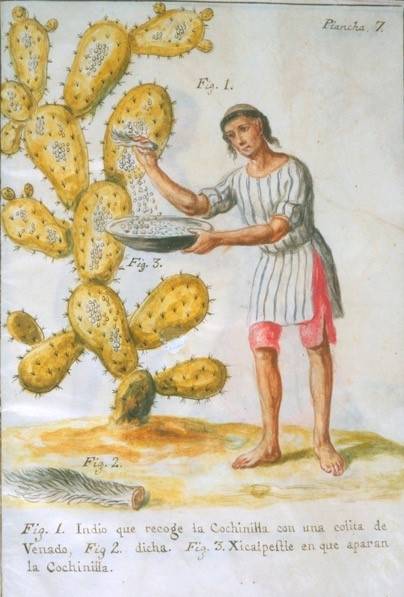
In cross-sections from the Girl, red lake is sometimes visible as particles that appear deep red in normal light, and fluoresce bright pink in UV. Because red lake fades over time, it is harder to see some of the particles. Calcium from the substrate can be detected using SEM-EDX. Paint fragments from the Girl’s skin and clothing were examined with the chromatographic technique UHPLC. They were found to contain carmine, most likely made from Mexican cochineal.
We could also see the distribution of red lakes in her lips and skin using ultraviolet fluorescence infrared examination.
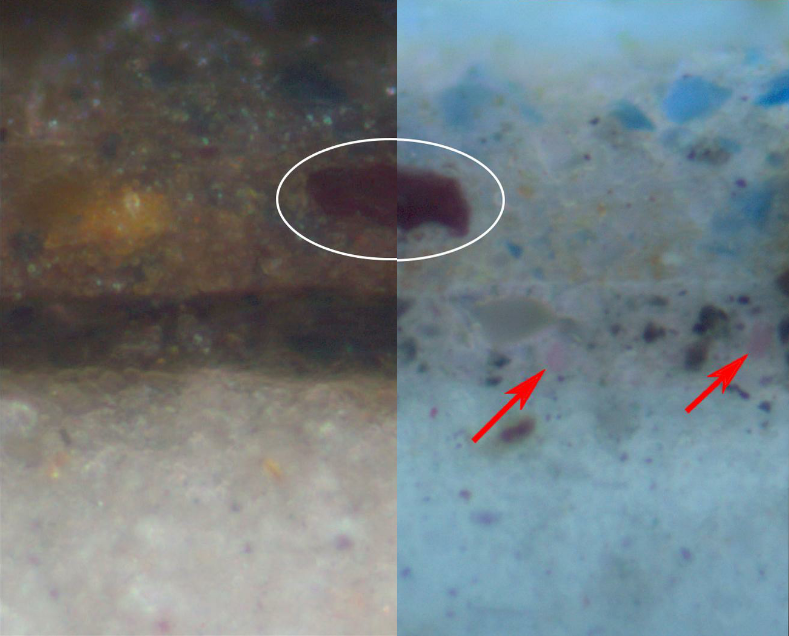
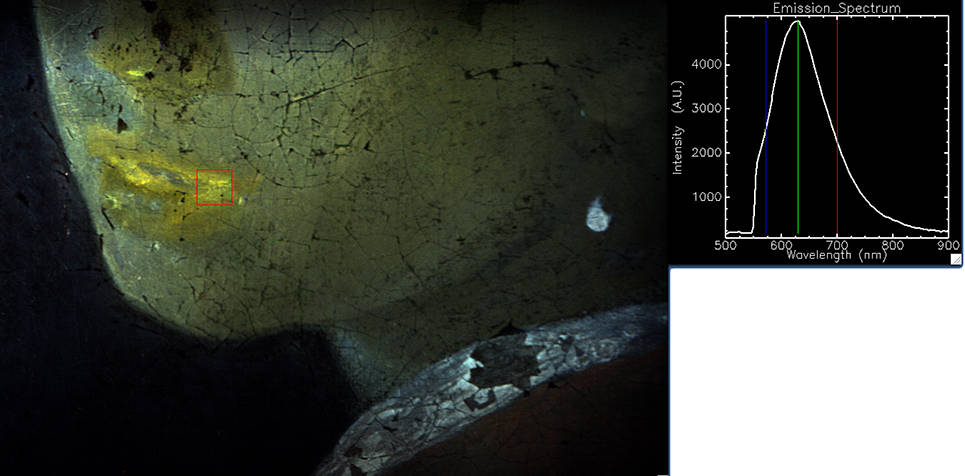
Check your pantry for any cochineal in your candies, sausages or cheddar cheese, because today it is used as food colouring. It’s also found in some lipsticks, which isn’t so different from how Vermeer used it on the Girl.

References
- Kirby, J., Spring, M., Higgitt, C. (2005) ‘The Technology of Red Lake Pigment Manufacture: Study of the Dyestuff Substrate’, National Gallery Technical Bulletin, Vol. 26, pp 71–87. More info.
- Kirby, Jo, Susie Nash, Joanna Cannon (eds.) (2010) Trade in Artists’ Materials: Markets and commerce in Europe to 1700, Archetype, London.
- Kirby, J., White, R. (1996) ‘The Identification of Red Lake Pigment Dyestuffs and a Discussion of their Use,’ National Gallery Technical Bulletin, Vol. 17, pp 56–80. More info.
- Vermilion: Wikipedia
- Cochineal: Wikipedia
- Gettens, Rutherford J. and Stout, George L. (1966). Painting Materials: A Short Encyclopedia. Courier Dover Publications. p. 171. Google Books
Acknowledgements
- MA-XRF: Annelies van Loon (Mauritshuis/Rijksmuseum)
- UV fluorescence imaging spectroscopy: John Delaney and Kate Dooley (National Gallery of Art, Washington), Victor Gonzalez (TU Delft)
- UHPLC Analysis: Art Ness Proaño Gaibor (Cultural Heritage Agency of the Netherlands (RCE))
- SEM-EDX: Annelies van Loon (Mauritshuis / Rijksmuseum), Ralph Haswell (Shell Technology Centre Amsterdam)
